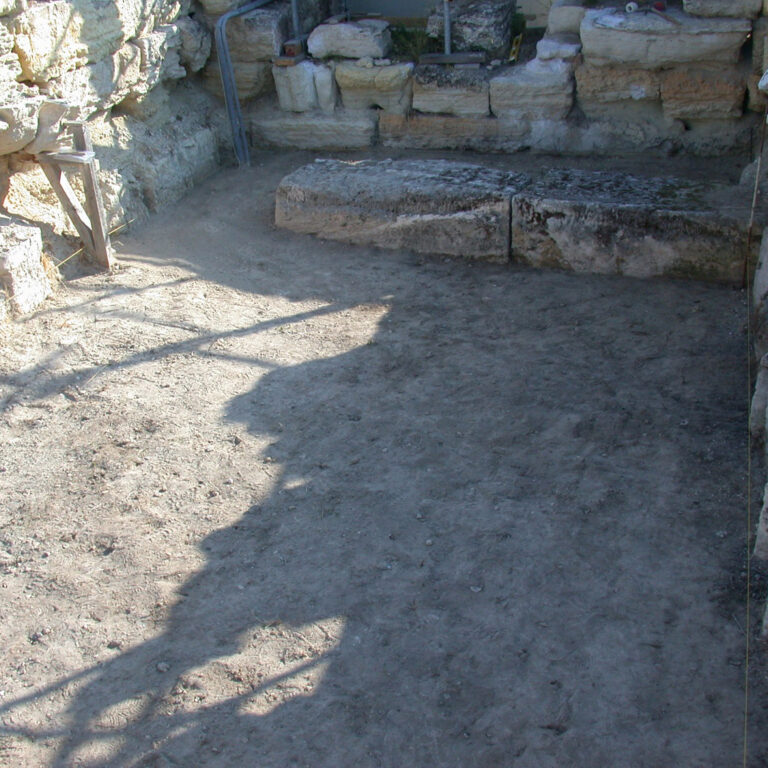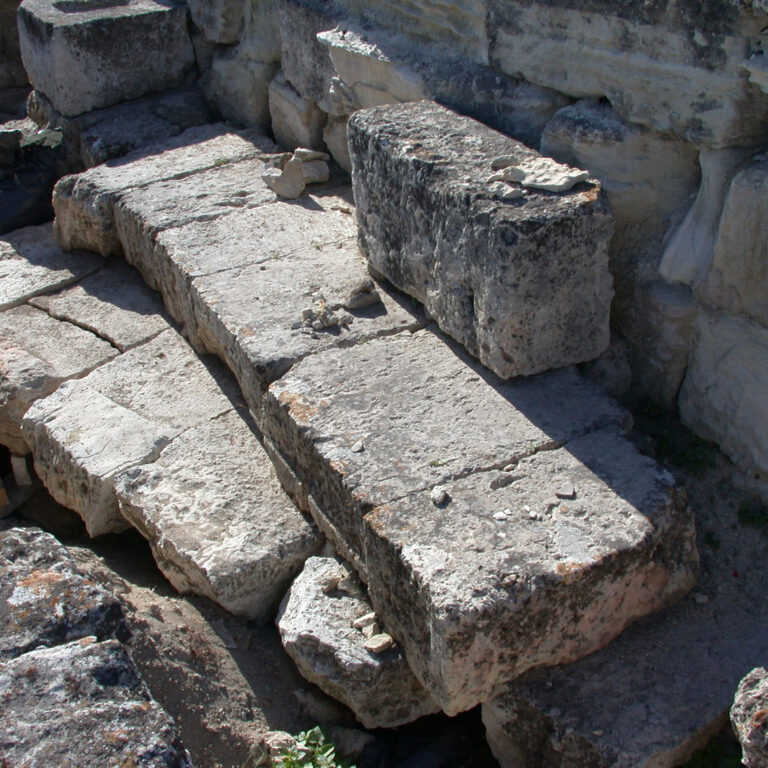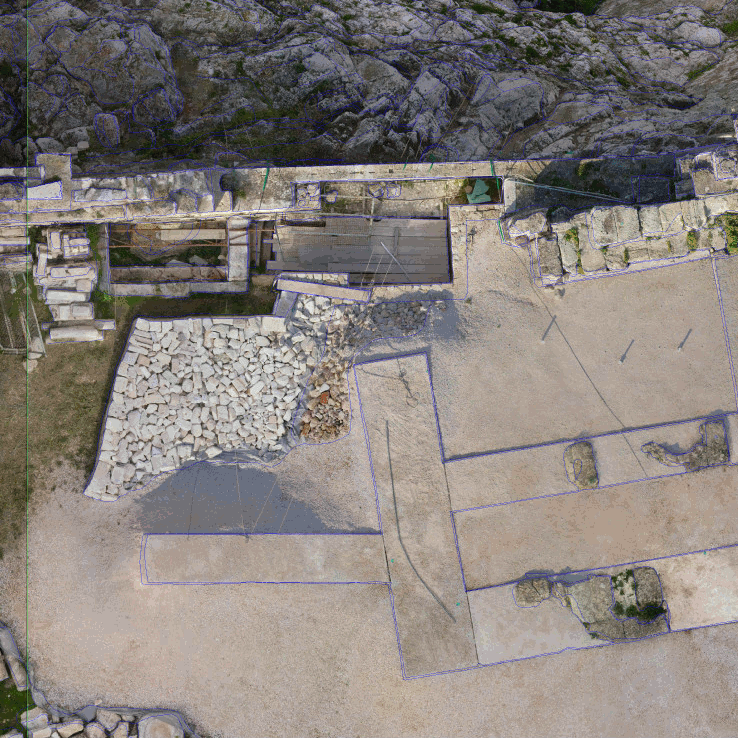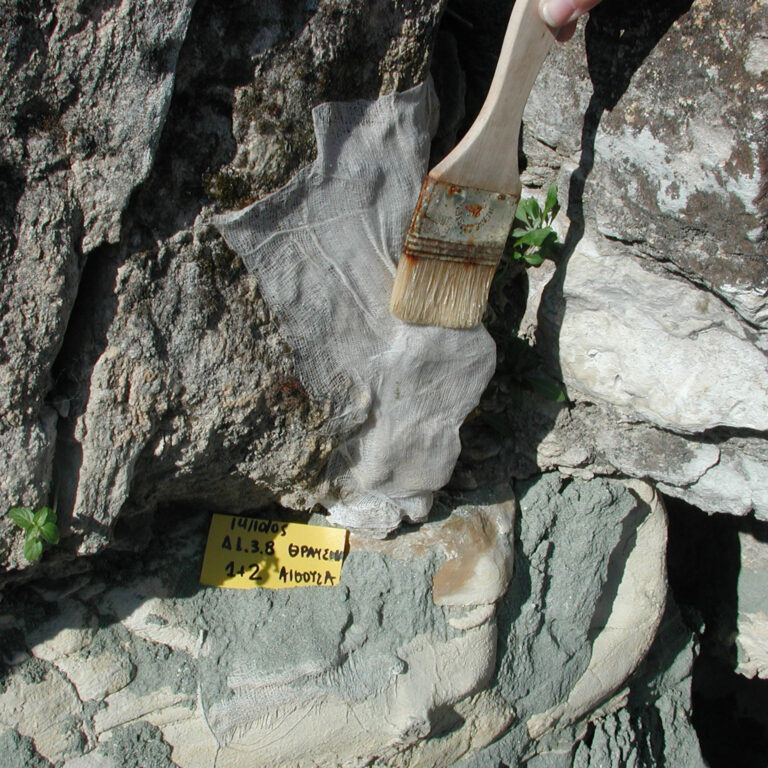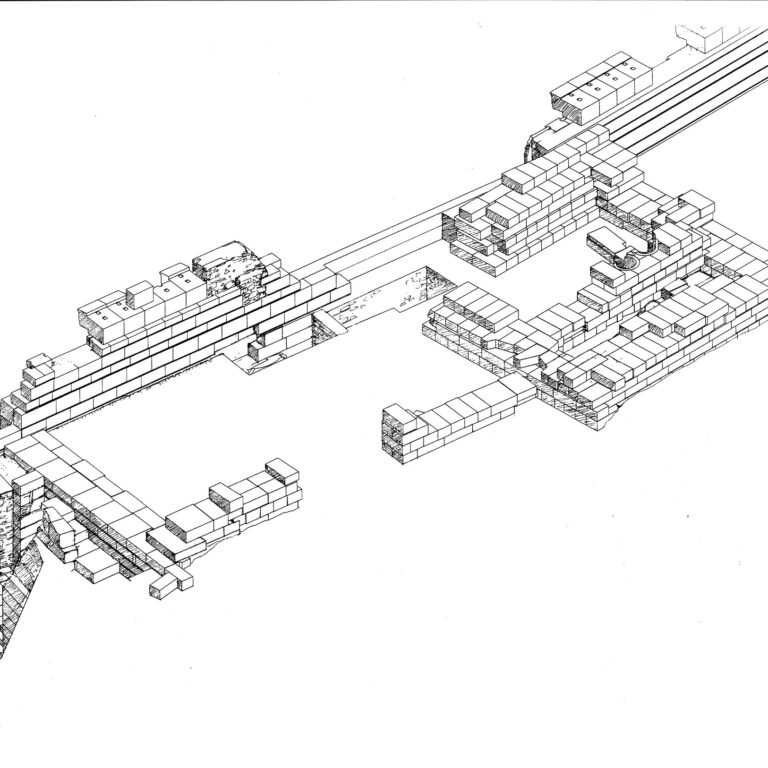
In the framework of the restoration of the Wall back-filling of the Arrephorion foundations was carried out. This appeared to be the best solution to protect the very soft and fragile limestone monument. The approved architectural study of B. Manidaki and geotechnical study of D. Egglezos envisaged covering of limestone, in total, of reinforced soil material in an appropriate manner during the paving (reinforced earth) to prevent lateral thrust to the wall .
This project is a pilot, and facing a small scale, broader problems of soil formation of the Acropolis: the structural design of walls, investigate physical and mechanical characteristics of the backfill material, rainwater runoff, labeling katachosmenon themeliotoichon the new ground level. Thus, in addition to considering the technical problems the opportunity to better assess a potential future major project that the general configuration of lands of the plateau of the Acropolis.
The systematic monitoring of the filling is continuous instrumental monitoring to control the triggers on the north themeliotoichou (topographic measurements precision pressure sensor on the external themeliotoichou, fiber control the movement of B. themeliotoichou). The nearly three years after the filling measurements show very small variations of deformation (recordings obtained due to the high sensitivity of the monitoring systems), an interpretation which goes back to the climate – temperature influence of the environment.
Conservation
West of the Erechtheion is the so-called “House of the Arrephoroi”, of which only the limestone foundations are preserved. In order to determine the mineralogical composition of the stones, samples were analysed at the Institute of Geological and Metallurgical Research (IGME). The stone was found to be mainly micropsammitic limestone and dolomite. The state in which the stone is preserved is related to its composition and different deposition phases, as well as to erosion caused by rain water and the salts in dampness from the ground. A considerable number of the stones have been broken into pieces, while others are flaked and cracked, particularly along the lines of veins and deposition layers. Pulverization of the material is particularly extensive mainly in the lower courses of the foundations. Likewise evident are clusters of holes with both large and small diameters. A biological crust is particularly evident on the upper surfaces of the stones, while a black crust has formed to a limited extent in areas protected from rain water.
It was decided to backfill the foundations in order to protect them from the action of erosive factors. The following works were carried out as preventive conservation preceding the filling:
- recording of the state of preservation.
- securing fragments that are ready to fall.
- collection of fragments that have fallen. In most cases it is virtually impossible to identify them as their edges are altered.
- consolidation of the surface.
An inorganic material that is compatible with the building material of the foundations is being sought for joining the fragments and filling the cracks and delamination.


